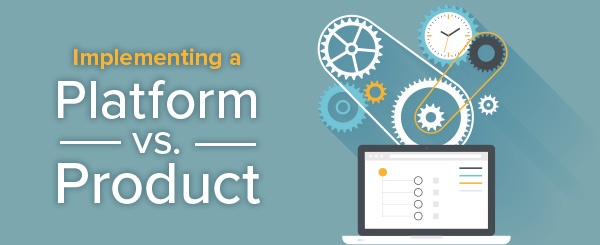
Now more than ever, the healthcare landscape is tempestuous. It’s experiencing a series of radical, creative, intermediating and progressive changes that are each fundamental to the trajectory of the industry. These changes include regulatory, payer relationships, care integration and educated consumers, which are not necessarily affecting the clinical services themselves, but instead the way the services are monetized and delivered through technology, such as electronic health records (EHRs).
As a pricey investment that can take years to integrate, providers are not the only ones faced with challenges. Technology vendors are also tasked with striking the balance between an out-of-the-box and customized solution that meets the needs of today’s dynamic healthcare environment. As a result, a paradigm shift is occurring in which vendors are collaborating to offer a platform, not a product.
Consider the key challenges, differences and success factors between an EHR product and platform.
- The EHR product challenge
At the core of its existence, an EHR is meant to collect, share, process and analyze data. Today however, with frequent changes and different data standards across organizations, traditional approaches to software development are not designed to address this. These issues, plus complex workflows and impossible rules, cause providers to create manual and ad hoc processes, use spreadsheets and standalone databases or continuously pour dollars into adapting their EHR product. This not just increases project costs and risk, but makes the product unsustainable.
- The EHR platform difference
Rather than relying on an out-of-the-box or customized solution to magically address these challenges, providers and vendors are collaborating to create a valuable solution, known as a 'platform'. This concept sees that a platform maintains all of the capabilities of an EHR product but in addition, a robust set of tools and APIs that can be used and enhanced by customers or third parties.
A good example of how a platform works is the Apple iPhone. When it was introduced to the market, the iPhone had a mere 15 applications to offer its users. However, as a platform, the device allowed other people – its customers and third parties – to create apps and add their own value to the product. Today, the product is seemingly limitless, offering users with more than one million apps. Instead of its value being solely created by the vendor – it’s collaborative; its value created by all.
- The EHR platforms’ reality
To create an EHR platform that is truly flexible with the means to create new data requirements as needs shift and arise, these three realities must be considered: architecture, people and culture, and business model. Architecture requires a new kind of thinking – one that shifts a company’s mission from being internally successful to fostering a community of contributors in which multiple companies, customers, vendors and third parties are responsible for the platform’s success. Next, people and culture need to be aligned, requiring leadership to grant staff access to information they were not necessarily privy to in the past. Finally, it’s important that companies stop trying to be everything to everyone and instead, contribute collectively with a specialized service or product.
